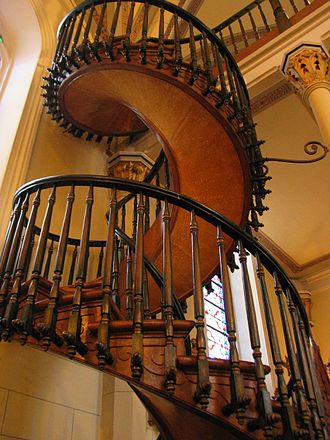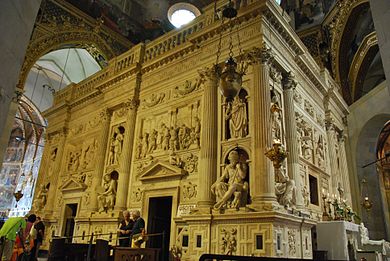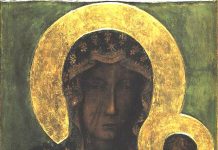The memorial of Lady of Loreto was put back into the universal calendar, on this day by Pope Francis in December, 2019, in those halcyonic months just before the tsunami of Covid-insanity hit the world. Today we celebrate the home where the Holy Family lived.
But why Loreto, on the shores of the Adriatic in Italy, when the Holy Family lived in the Holy Land, at Nazareth? The legend goes that the house of Joseph, Mary and Jesus was, by tradition, lifted away by angels in 1291, to save it from desecration by the Muslim hordes. The house was taken first to Dalmatia (now Croatia), then to several spots in Italy, before its current spot, within a marvelous marble sarcophagus by various Renaissance masters, which is in turn is within the majestic Basilica della Santa Casa. (As an aside, it was an exact replica of the Holy House that was built by apparently miraculous means in 1061 on the site of what is now Our Lady of Walsingham shrine in England).
The ‘Santa Casa’ (Holy House) itself is a small stone structure, with three sides (the fourth side, which, by the way, matches the other three perfectly, is still in Nazareth). Inside are a statue and icon of the Virgin, with the former purportedly by Saint Luke himself.
There is much evidence that this may well be the very house of the Incarnation – the most earth-shattering event ever. Perhaps, however, it was not flown to its present location by angels, but rather moved around stone by stone by a family named ‘Angelos’ or ‘Angeli’ . (The stones have markings on them that may have signified to workers where they were to be placed). But one never knows, and we should not limit the power and miracles of God. After all, as the Angel said to Mary, with God nothing will be impossible.
Pope Saint John Paul II, in a 1993 letter on the Holy House, remarked on its importance:
The Holy House of Loreto is not only a “relic”, but also a precious and true “icon”. It is an “icon” not of abstract truths, but of an event and a mystery: the Incarnation of the Word…
It is not just a doctrine concerning the union between the divine and the human, but rather an event that happened at a precise point in time and space, as the words of the Apostle marvellously bring to light: “When the fullness of time came, God sent his Son, born of woman”. Mary is that Woman.
May this Shrine of Loreto – as John XXIII said – be always a window opening onto the whole world, re-echoing those hidden voices which make known the sanctification of souls, families and peoples”.
There is another connection with Saint Joseph, in the strange and wonderful story in 1878 of the ‘Staircase of Loreto‘ in Santa Fe – The chapel named after the shrine had a choir loft, 22 feet up, but with no practical way to get there. The Sisters prayed a novena to Saint Joseph, at the end of which a mysterious man showed up, built a spiral staircase to the loft, without nails, perfectly constructed in a way that still baffles experts. The carpenter left without a trace – well, besides his marvelous, and perhaps miraculous, carpentry skills:

It is after Loreto that we name the Litany dedicated to Our Lady, with her various titles – to which the Popes have added other titles over time, including Pope Paul VI (Mother of the Church); John Paul II (Queen of the Family); and three new additions more recently Pope Francis (Mother of Mercy, Mother of Hope, Mother of Migrants).
The primary purpose of the Litany is to increase our devotion to the Mother of God, to seek her maternal intercession in all our needs. Of course, we have the Rosary as well, along with numerous other Marian devotions and prayers. We know not what gifts we might receive from such a munificent benefactor, who seeks all our good, and then some. As Our Lady of Guadalupe, whom we celebrate two days hence, would say to Juan Diego, ‘Am I not your mother?’.











